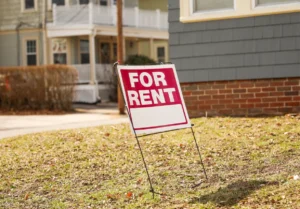Key Assumptions Every Investor Should Know

Decoding Multifamily Evaluation
When evaluating multifamily properties as potential investments, financial models play a crucial role in determining their viability. These models not only project cash flows but also estimate the eventual sale price of the property, which significantly impacts the overall return on investment.
It’s important to recognize that the accuracy of these projections, including the anticipated selling price and returns, hinges entirely on the assumptions built into the model. If these assumptions are overly optimistic or unrealistic, the projected sale price and returns will be inaccurate, potentially leading to poor investment decisions.
Three key assumptions in these models significantly impact the projected returns and overall investment attractiveness. These are:
- Rent increase per year
- Expense increase per year
- Exit cap rate vs. Entry cap rate
Let’s delve into each of these assumptions and explore their importance, keeping in mind that getting these right is crucial for accurate projections and sound investment strategies.
Rent Increase per Year
The annual rent increase assumption is a critical factor in projecting future cash flows for a multifamily property. This percentage represents the expected growth in rental income year over year. We take a conservative approach by typically limiting our rent increase projections to 5-6% per year. This cautious stance helps us avoid overly optimistic forecasts that may not materialize in reality. Factors influencing rent increases:
- Local market conditions
- Economic trends
- Property improvements
- Supply and demand dynamics
It’s important to note that while some markets may experience higher rent growth in certain years, sustaining such growth over an extended period is challenging. By using more modest projections, we aim to provide a buffer against potential market fluctuations.
Expense Increase per Year
Just as income is expected to grow, operating expenses for multifamily properties also tend to rise over time. This assumption accounts for the anticipated annual increase in costs associated with managing and maintaining the property.
We generally use a 2% annual expense increase for our California properties. This conservative estimate is primarily due to the unique property tax situation in California, where Proposition 13 limits annual property tax increases to 2% or the rate of inflation, whichever is lower.
Key expenses to consider:
- Property taxes
- Insurance
- Utilities
- Maintenance and repairs
- Property management fees
By using a modest expense growth rate, we create a more resilient financial model that can better withstand unexpected cost increases or market downturns.
The Difference Between the Entry Cap Rate and Exit Cap Rate
The capitalization rate, or cap rate, is a crucial metric in real estate valuation. It represents the ratio of a property’s net operating income (NOI) to its market value. The entry cap rate is the rate at the time of purchase, while the exit cap rate is the projected rate at the time of sale. Why we increase the exit cap rate:
- Accounts for potential market softening
- Provides a buffer against overvaluation
- Reflects a more conservative sale price projection
By assuming a higher exit cap rate, we’re essentially projecting that the market may be slightly less favorable when we sell the property. This approach helps protect against overly optimistic valuations and provides a margin of safety for our investors.
Why Limited Partners Should Understand These Assumptions
Limited partners in a multifamily syndication must grasp these key assumptions for several reasons:
- Risk assessment: Understanding the assumptions allows investors to gauge the level of conservatism in the projections and assess the potential risks involved.
- Realistic expectations: By knowing the underlying assumptions, limited partners can form more realistic expectations about potential returns and the investment timeline.
- Comparative analysis: These assumptions serve as benchmarks for comparing different investment opportunities and evaluating the relative conservatism of various syndicators.
- Due diligence: A thorough understanding of these assumptions empowers limited partners to ask informed questions and perform more effective due diligence on potential investments.
- Long-term perspective: By appreciating the rationale behind conservative assumptions, investors can better align their expectations with a long-term investment strategy.
Conclusion
Understanding these key assumptions is crucial for investors to make informed decisions and set appropriate expectations for their multifamily real estate investments.
Source: Old Money Capital













 Accessibility
Accessibility